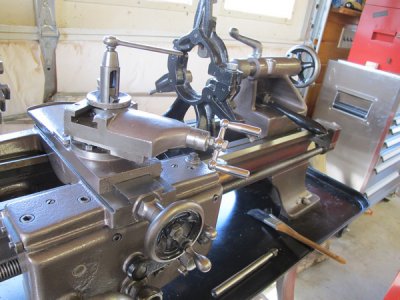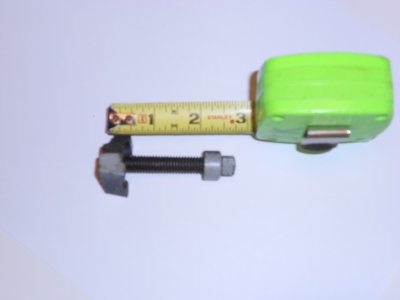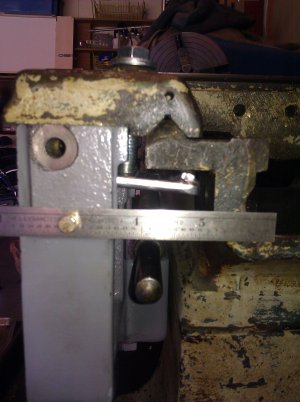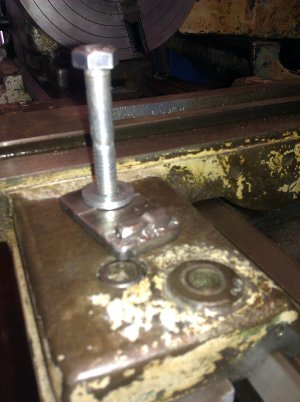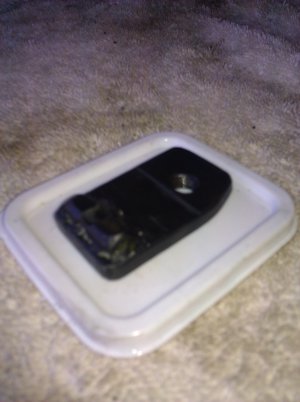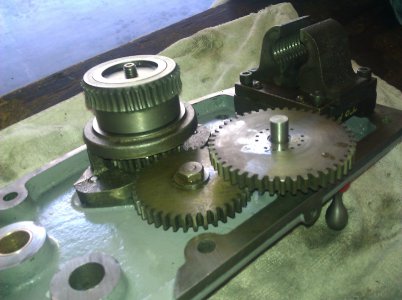Re: Greg's Logan 820 Restoration - Saddle teardown
This week's progress (aka problem) report:
I'd said I needed to make a new handwheel shaft. But of course, that will require putting the lathe back together again temporarily. Before doing that I figured that I'd see what other parts might need some lathe action.
The cross feed screw (LA-153) has several issues:
- The threads at the "handwheel end" are a bit chewed up. Looking at the Parts Catalog, I now see that sometime during this 820's long career, the handwheel disappeared and was replaced with a crank, likewise on the compound slide. Properly done, a crank would be fine. But instead of a keyway for a woodruff key, the crank has a fixed pin to act as the key. And on the screw shaft, the short woodruff keyseat has been machined into a regular keyseat slot all the way to the end, so that this crank/pin can slide into place. [I wonder if the compound slide is similarly afflicted?]
- The "bushing" LA-689 has some wear in its bronze bushings (612) and the feed screw is worn at those bushings. Sloppy, but not extreme; maybe 0.005 total play. I bought replacement bushings.
- Design questions: what is supposed to serve as a thrust bearing in this mechanism? It seems that that first step in the screw shaft diameter (to 0.500) bears against the end of the bronze bushing and the side of the cross feed idler gear bears against the steel LA-689 bushing. Maybe a bronze flat washer in between would help. And how to keep these bearing/bushing surfaces lubricated? I don't see how the felt washers on the other side of the gear would help. Or are they supposed to sandwich the gear?
- By the way, inability to oil those bushings in the apron for the handwheel and the longitudinal drive shaft probably contributed to their excessive wear. They are too high up to benefit from the apron's oil sump, right? I am thinking about drilling a hole or two in the apron casting so that some oil can be manually feed.
- Acme thread wear: near the ends of the acme thread, I find no measurable end-play. But an inch or two down, there's 0.007" play. That suggests the wear is mainly in the shaft and not the Acme nut.
Assuming I want to remedy these issues, I can buy one or make one. But replacement LA-153 screws are too expensive and the 7/16 Acme 10 TPI thread is non-standard. I didn't find any commercially-available source. For now, I will go with what I've got. maybe later I will try machining a new one. An alternative might be to machine the front part and splice it onto some standard 1/2" 10 TPI Acme "all thread." Of course, a different nut would be needed. I need to see if there's clearance for this "upgrade."
One of the way wipers was missing. Not just the felt, the whole assembly. I fabricated a replacement from scrap.
This photo shows the parts discussed above (cross feed shaft/screw, bushings, way wipers)
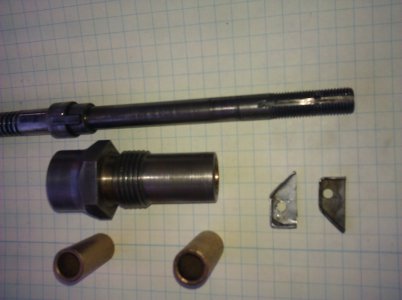
Okay, for this weekend, I will replace the bushings, reassembly the saddle and apron, and perhaps start making that handwheel shaft (LA-549) now that I have a woodruff keyseat cutter.
Greg

